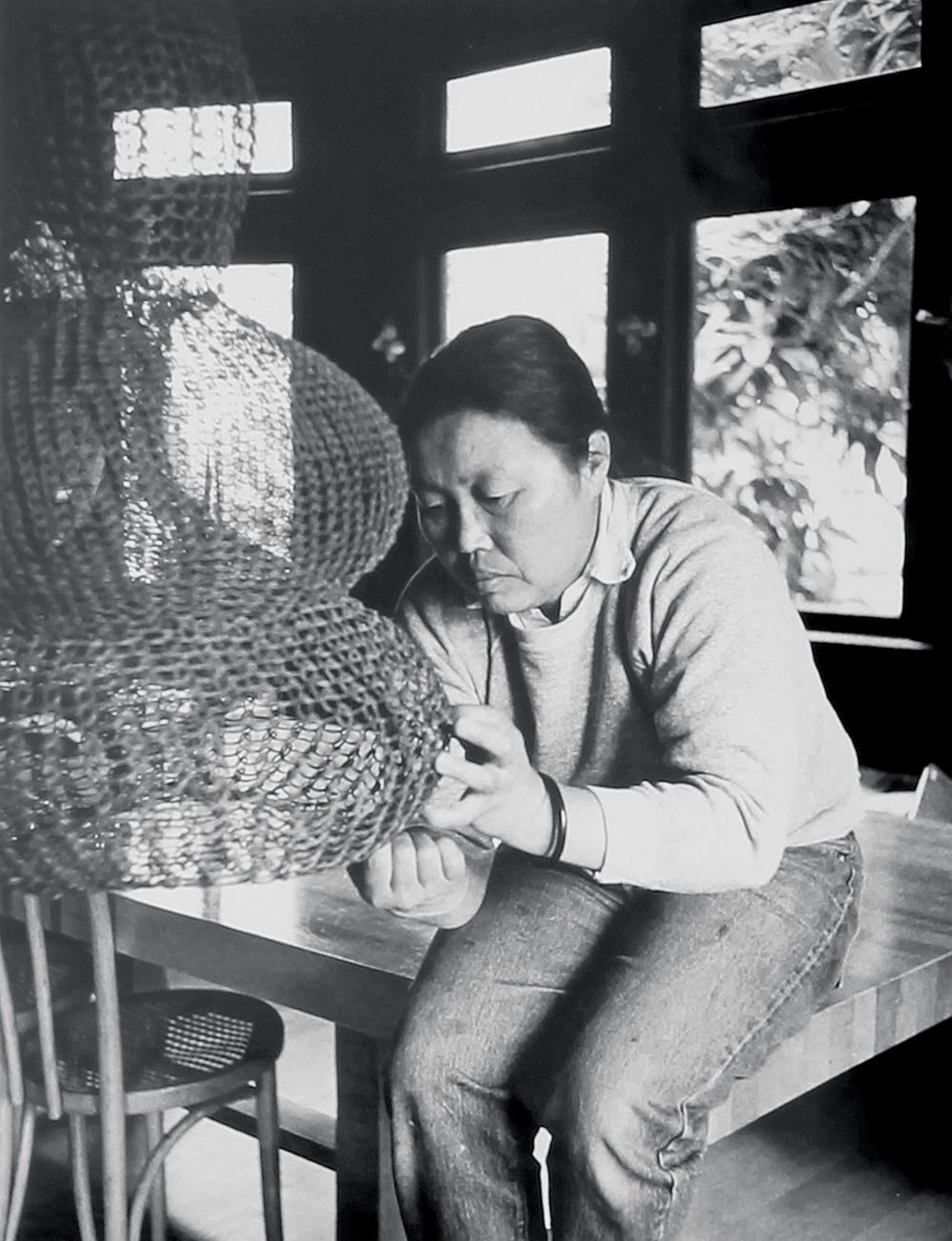Ruth Asawa. Learning to Loop with Wire

Ruth Asawa learned how to loop with wire from a craftsman in Toluca, Mexico, where in 1947 she traveled on summer break from Black Mountain College.1 Upon her return, she began working with the material in a more abstract way, as a line that could interlock, interweave, and go anywhere in space: “You don’t think ahead of time, ‘this is what I want.’ You work on it as you go along. You make a line, a two-dimensional line, then you go into space, and you have a three-dimensional piece. It’s like a drawing in space.”2 With the simple e-shaped crochet loop, she could draw and sculpt simultaneously. Asawa always began from the inside out, creating orbs that seem to float within larger spheres. The outside surface of the smaller sphere folds over to become the inside surface of the sphere around it so, like a line, there is continuity.
Paul J. Karlstrom, “Interview with Ruth Asawa and Albert Lanier Conducted for the Archives of American Art, Smithsonian Institution,” excerpted in The Sculpture of Ruth Asawa: Contours in the Air, ed. Daniell Cornell (San Francisco: Fine Arts Museums of San Francisco; and Berkeley: University of California Press, 2006), 118. ↩︎
Leah Ollman, “The Industrious Line,” Art in America, May 2007, 162. ↩︎